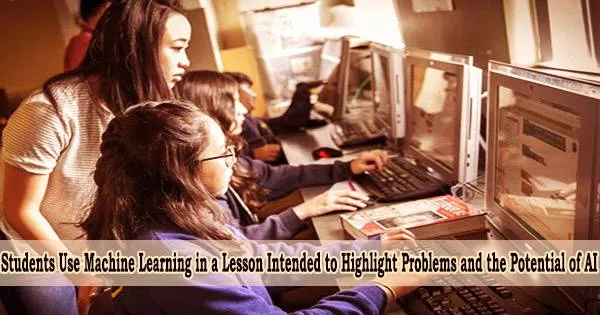28 high school students were asked to develop their own machine-learning artificial intelligence (AI) models for data analysis as part of a recent study by North Carolina State University researchers. The initiative aimed to prepare the next generation of workers to use AI technologies by assisting students in exploring the difficulties, potential, and limitations of AI.
The investigation was carried out in combination with a journalism course at a high school in the Northeast. At that time, researchers have expanded the program to include high school students in North Carolina and other states. In order to work together to implement the curriculum in classrooms, NC State researchers are seeking partnerships with additional schools.
“We want students, from a very young age, to open up that black box so they aren’t afraid of AI,” said the study’s lead author Shiyan Jiang, assistant professor of learning design and technology at NC State. “We want students to know the potential and challenges of AI, and so they think about how they, the next generation, can respond to the evolving role of AI and society. We want to prepare students for the future workforce.”
Researchers created a computer application called StoryQ for the project that enables students to create their own machine-learning models. Then, for a month, researchers held weekly, 1.5-hour seminars for teachers to learn about the machine learning curriculum and technologies. Researchers recapped the curriculum for participating teachers and worked out logistics for those who signed up to participate further.
“We created the StoryQ technology to allow students in high school or undergraduate classrooms to build what we call ‘text classification’ models,” Jiang said. “We wanted to lower the barriers so students can really know what’s going on in machine-learning, instead of struggling with the coding. So we created StoryQ, a tool that allows students to understand the nuances in building machine-learning and text classification models.”
If there are any schools interested, we are always ready to bring this program to a school. Since we know teachers are super busy, we’re offering a shorter professional development course, and we also provide a stipend for teachers. We will go into the classroom to teach if needed, or demonstrate how we would teach the curriculum so teachers can replicate, adapt, and revise it. We will support teachers in all the ways we can.
Professor Shiyan Jiang
A teacher who decided to participate led a journalism class through a 15-day lesson where they used StoryQ to evaluate a series of Yelp reviews about ice cream stores. Students developed models to predict if reviews were “positive” or “negative” based on the language.
“The teacher saw the relevance of the program to journalism,” Jiang said. “This was a very diverse class with many students who are under-represented in STEM and in computing. Overall, we found students enjoyed the lessons a lot, and had great discussions about the use and mechanism of machine learning.”
Researchers discovered that students had made assumptions about certain words in the Yelp reviews that they believed would indicate whether a review would be favorable or unfavorable. For example, they expected reviews containing the word “like” to be positive.
Then, the teacher guided the students to analyze whether their models correctly classified reviews. For example, a student who used the word “like” to predict reviews found that more than half of reviews containing the word were actually negative. Then, researchers said students used trial and error to try to improve the accuracy of their models.
“Students learned how these models make decisions, and the role that humans can play in creating these technologies, and the kind of perspectives that can be brought in when they create AI technology,” Jiang said.
Researchers discovered from the students’ conversations that they had a range of opinions about AI. For instance, the prospect for using AI to automate the selection of students or candidates for opportunities like scholarships or programs highly concerns students.
For future classes, researchers created a shorter, five-hour program. They’ve launched the program in two high schools in North Carolina, as well as schools in Georgia, Maryland, and Massachusetts. In the next phase of their research, they are looking to study how teachers across disciplines collaborate to launch an AI-focused program and create a community of AI learning.
“We want to expand the implementation in North Carolina,” Jiang said. “If there are any schools interested, we are always ready to bring this program to a school. Since we know teachers are super busy, we’re offering a shorter professional development course, and we also provide a stipend for teachers. We will go into the classroom to teach if needed, or demonstrate how we would teach the curriculum so teachers can replicate, adapt, and revise it. We will support teachers in all the ways we can.”
The study, “High school students’ data modeling practices and processes: From modeling unstructured data to evaluating automated decisions,” was published online on March 13 (2023) in the journal Learning, Media, and Technology. Co-authors included Hengtao Tang, Cansu Tatar, Carolyn P. Rosé, and Jie Chao. The National Science Foundation under grant number 1949110 supported the work.





